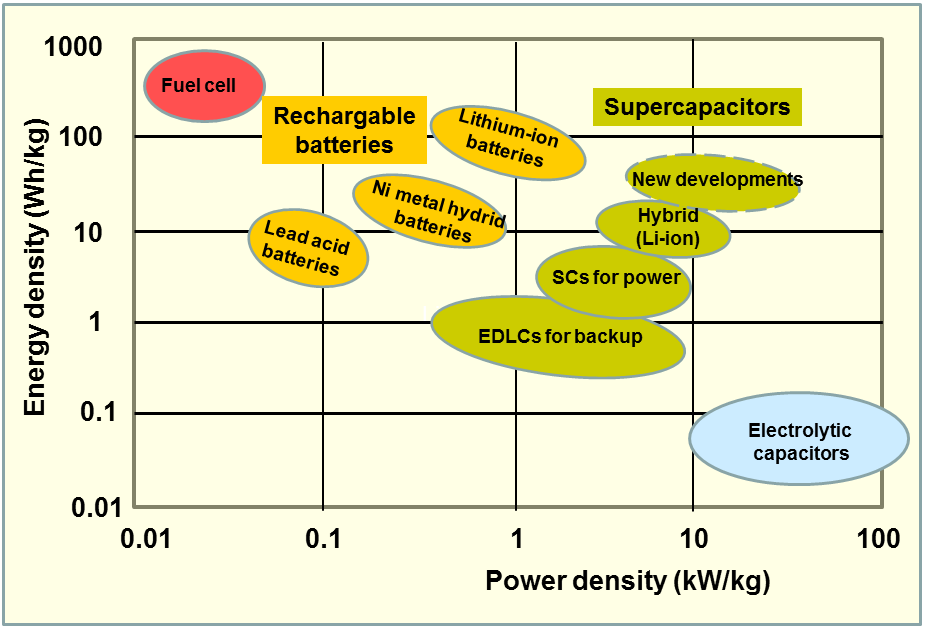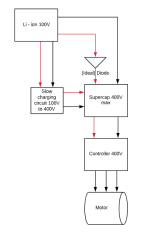I was thinking why not use a super capacitor bank along with a li ion battery pack and build some kind of a management system to handle the charge/discharge of the super capacitors.
I was thinking why not have lets say a 20S 8P 25R pack with a 120A controller and have the capacitor bank be used first for every hard pull until the hard pull goes to average power or until the capacitor bank is empty and then it goes back to the li ion battery.
It should be a mix so they work together in different percentages to maintain voltage as super capacitors will be depleted to 0 from what I learned...
What do you guys think?
I was thinking why not have lets say a 20S 8P 25R pack with a 120A controller and have the capacitor bank be used first for every hard pull until the hard pull goes to average power or until the capacitor bank is empty and then it goes back to the li ion battery.
It should be a mix so they work together in different percentages to maintain voltage as super capacitors will be depleted to 0 from what I learned...
What do you guys think?



